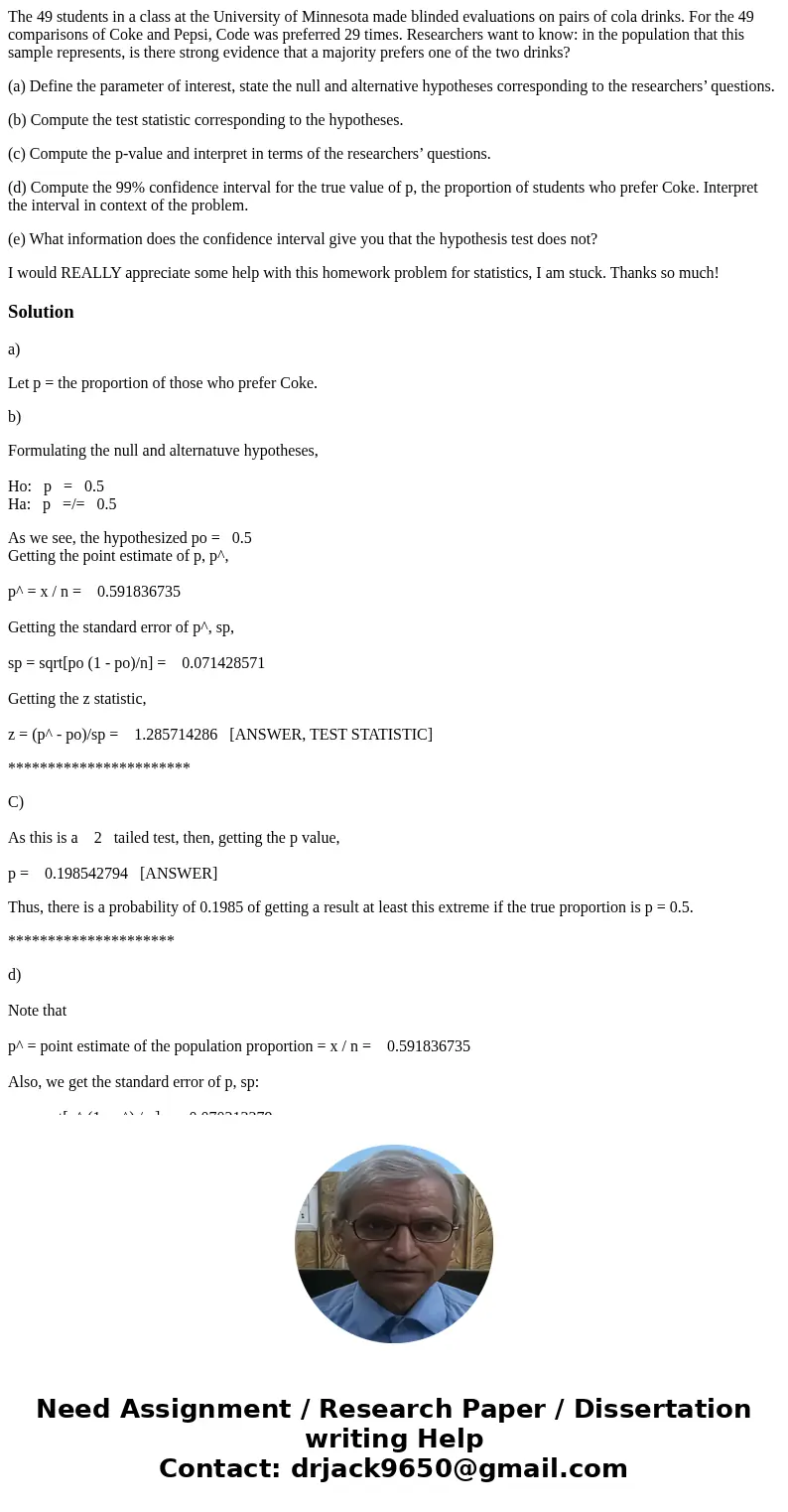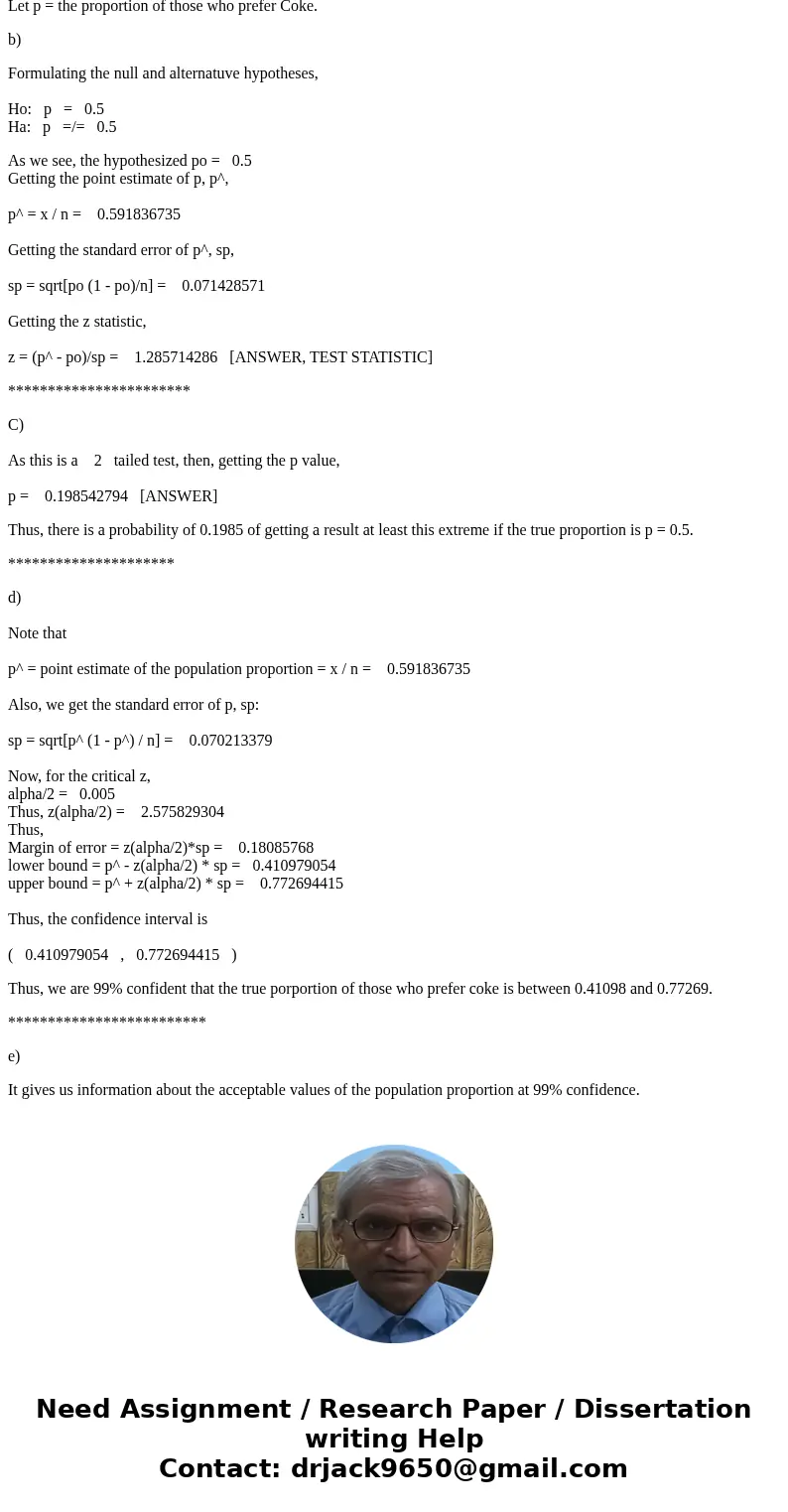The 49 students in a class at the University of Minnesota ma
The 49 students in a class at the University of Minnesota made blinded evaluations on pairs of cola drinks. For the 49 comparisons of Coke and Pepsi, Code was preferred 29 times. Researchers want to know: in the population that this sample represents, is there strong evidence that a majority prefers one of the two drinks?
(a) Define the parameter of interest, state the null and alternative hypotheses corresponding to the researchers’ questions.
(b) Compute the test statistic corresponding to the hypotheses.
(c) Compute the p-value and interpret in terms of the researchers’ questions.
(d) Compute the 99% confidence interval for the true value of p, the proportion of students who prefer Coke. Interpret the interval in context of the problem.
(e) What information does the confidence interval give you that the hypothesis test does not?
I would REALLY appreciate some help with this homework problem for statistics, I am stuck. Thanks so much!
Solution
a)
Let p = the proportion of those who prefer Coke.
b)
Formulating the null and alternatuve hypotheses,
Ho: p = 0.5
Ha: p =/= 0.5
As we see, the hypothesized po = 0.5
Getting the point estimate of p, p^,
p^ = x / n = 0.591836735
Getting the standard error of p^, sp,
sp = sqrt[po (1 - po)/n] = 0.071428571
Getting the z statistic,
z = (p^ - po)/sp = 1.285714286 [ANSWER, TEST STATISTIC]
***********************
C)
As this is a 2 tailed test, then, getting the p value,
p = 0.198542794 [ANSWER]
Thus, there is a probability of 0.1985 of getting a result at least this extreme if the true proportion is p = 0.5.
*********************
d)
Note that
p^ = point estimate of the population proportion = x / n = 0.591836735
Also, we get the standard error of p, sp:
sp = sqrt[p^ (1 - p^) / n] = 0.070213379
Now, for the critical z,
alpha/2 = 0.005
Thus, z(alpha/2) = 2.575829304
Thus,
Margin of error = z(alpha/2)*sp = 0.18085768
lower bound = p^ - z(alpha/2) * sp = 0.410979054
upper bound = p^ + z(alpha/2) * sp = 0.772694415
Thus, the confidence interval is
( 0.410979054 , 0.772694415 )
Thus, we are 99% confident that the true porportion of those who prefer coke is between 0.41098 and 0.77269.
*************************
e)
It gives us information about the acceptable values of the population proportion at 99% confidence.


 Homework Sourse
Homework Sourse